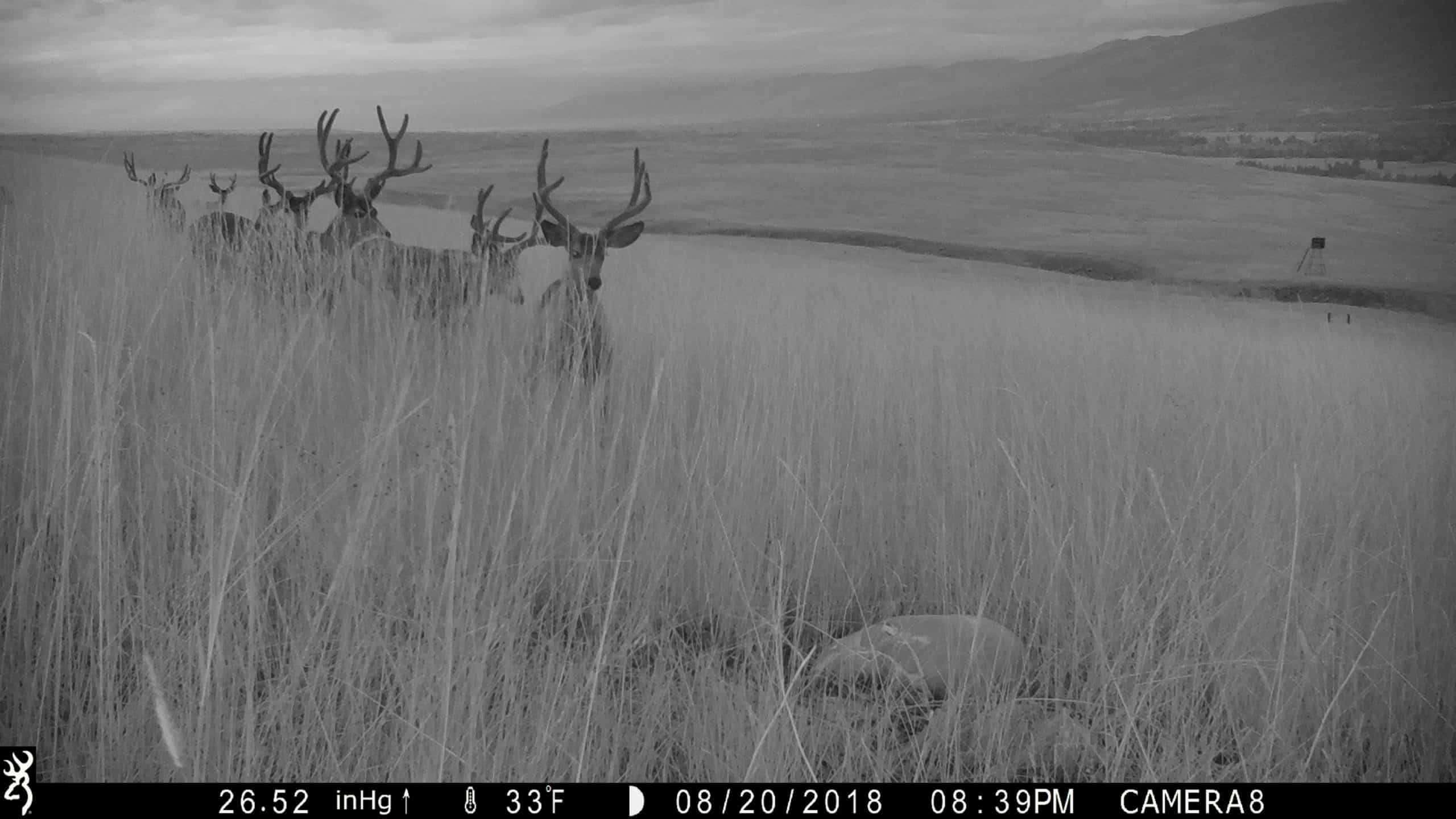Share this article
Q&A: Can hunters help monitor scavengers?
A video of bobcats and coyotes tearing into a bloody, rotting carcass isn’t usually inspirational. But when researchers Katharine Stone and Michael McTee were looking to learn more about the scavenger community of western Montana, they realized their fascination was shared.
“It turns out non-scientists adore seeing animals dig their faces into gore as much as we do,” said TWS member McTee, a biologist at MPG Ranch, a private ranch in Montana working to improve wildlife habitat.

Michael McTee is a biologist at MPG Ranch. Credit: Jordan Hoffmaster
In a recent research published recently in the Journal of Wildlife Management, McTee and Stone, also a biologist at MPG Ranch, asked volunteer hunters to help set up remote cameras around carcasses and offal in western Montana. They also set up trail cameras themselves around elk (Cervus canadensis) remains at MPG Ranch left over after hunts to monitor the scavenger species that came by for a meal.
To learn more about how hunters can help monitor scavenger communities, The Wildlife Society connected with McTee for our latest Q&A.
What inspired you to task hunters with tracking scavengers?
My co-author on this study, Katharine Stone, had previously recruited landowners in Montana’s Bitterroot Valley to monitor carcasses placed on their properties. The goals were to re-sight tagged bald (Haliaeetus leucocephalus) and golden eagles (Aquila chrysaetos) at the carcasses and engage the community with conservation-oriented research that showcased the ecological value of scavengers on private lands.
Remote cameras photographed fleets of eagles perched atop ribcages, some wearing wing tags, GPS transmitters or leg bands. But the cameras revealed so much more. They recorded a bobcat (Lynx rufus) sharing a carcass with a coyote (Canis latrans), a startling number of deer sniffing carrion, and a scattering of uncommon scavengers. Perhaps best of all, the photos filled the landowners with a sort of ecological glee, propelling them into scavenger advocacy.
With roughly 12 million hunters leaving boot prints across the many habitats spanning the United States, we thought a similar program might catapult scavengers toward the limelight.
Why is it important to monitor scavengers?
Scavengers offer waste management services at no charge. They devour flesh that might team with pathogens. They transfer nitrogen, phosphorous and other nutrients from the dead to the living. Many scavengers are also top predators that play vital ecological roles and are culturally valued. Yet, many species of scavengers—particularly vultures—have suffered from unintentional poisonings and widespread die-offs.
How could hunters help monitor scavengers?
It’s easy—hunters can hang game cameras to watch the offal and carcasses they leave behind. Just be safe when returning to the kill site! Many scavengers carry weaponry in the form of claws and canine teeth.
When hunters sort through the hundreds—if not thousands—of photos and uncover noteworthy observations, they can share the images. For marked birds, the National Bird Banding Lab would be my first stop. For uncommon mammals, such as wolverines (Gulo gulo), wolves (Canis lupus), or fishers (Pekania pennanti), I’d connect with a local biologist. The observations could also be uploaded to eBird, iNaturalist, or social media, where naturalists will be delighted to watch a golden eagle fill its crop with elk liver.

Researchers were surprised to find that deer often approached and sniffed carcasses. Credit: MPG Ranch
How could hunter efforts help wildlife management?
The foundation of wildlife management—or science, in general—starts with making observations and asking questions. With the help of hunters, wildlife managers will never be short on observations. In our study, deer and elk approached carrion at 42% of the sites. Why did ungulates find dead animals so appealing? We aren’t sure. But as chronic wasting disease grips new regions, the observations stress the importance of proper carcass disposal.
Hunters also tromp to far-flung places, whether in deep woods, across lonely agricultural fields, or up shale-covered mountains. It’d be tough for a team of biologists to find the time—and grant money—to reach a similar swath of environments. With enough hunters contributing observations, biologists might see a heightened detection of rare and elusive predators.

Raptors fight over a carcass. Credit: MPG Ranch
Would there be any conservation implications?
We hope our monitoring program and others like it will build enthusiasm for scavengers. When we ran our study, participants were thrilled to plug in their SD cards and see which animals lurked at their hunting spot. Hunters often reached out with questions about raptor identification or lead poisoning. They saw how a successful hunt fed not only their families but also a wealth of wildlife.
This article features research that was published in a TWS peer-reviewed journal. Individual online access to all TWS journal articles is a benefit of membership. Join TWS now to read the latest in wildlife research.
Header Image: A coyote sniffs at a carcass in western Montana. Credit: MPG Ranch








